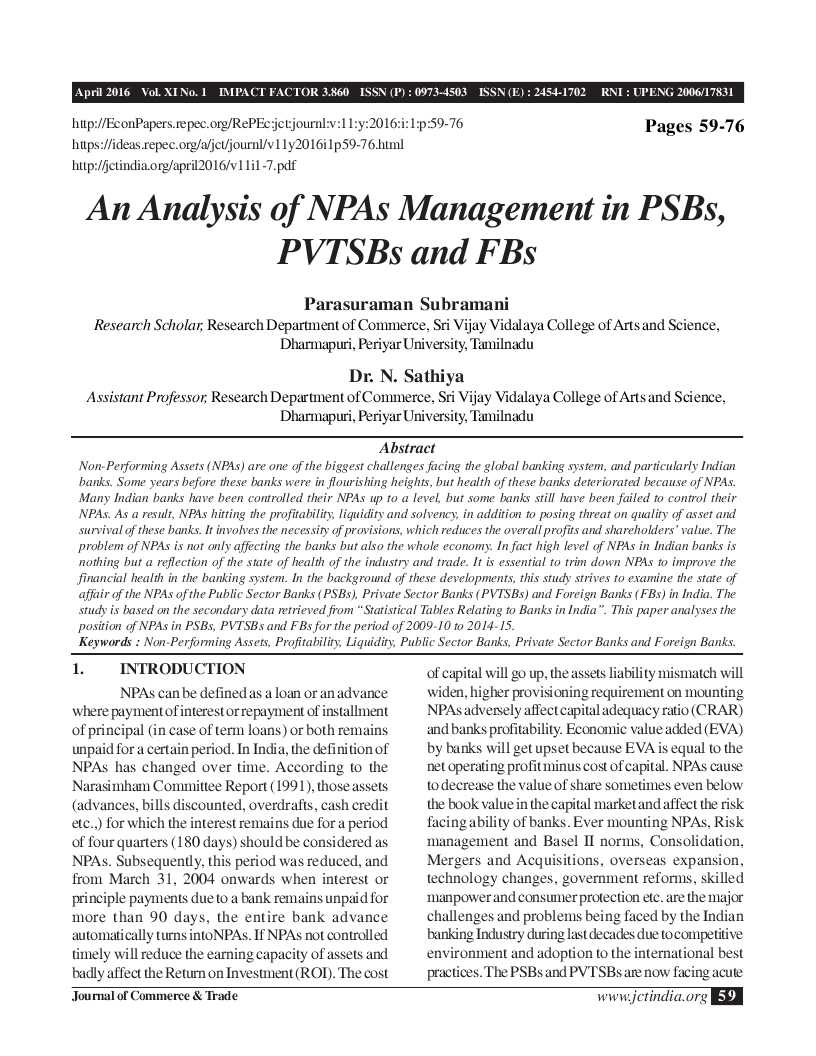A Conceptual Perspective on Brand Switching Behaviour of Consumers in Telecommunication Industry
DOI:
https://doi.org/10.26703/jct.v11i1.229Keywords:
Telecommunication Industry, Brand Switching, Buyer Behaviour, Technology, CompetitionAbstract
The best thing to happen to mankind was the mobile phone. India has emerged as the fastest growing mobile phone market in the world. Mobile phone was thought of as a magical gadget in the past. It is a reality now. With the advent of advanced technologies like GSM, CDMA, WLL and 3G technology and growing number of service providers, the competition has increased many folds. Every day, companies belonging to both the public sectoras well as the private sector are putting in their resources and efforts to improve their services so as to give maximum benefit to their customers. Hyper competition in the telecommunication industry, availability of number of subscriber options for consumers, diverse tariff rates offered by each player influence consumers to switch their services providers. This paper focuses on enlisting factors influencing consumer switching behaviour in telecommunication industry. However, one thing is certain. By providing value added services and effective pricing strategies; telecom service providers can influence and control to a large extent the consumer brand switching behaviour and can retain customers.
Downloads
References
Kumaravel and Kandasamy (2011). Impact of Mobile Number Portability on Mobile Users Switchover Behavior-Indian Mobile Market, Journal of Arts, Science and Commerce, 200-205.
Dick, A.S. and Basu, KI (1994). Customer Loyalty: Toward Integrated Conceptual Framework, Journal of the Academy of Marketing Science, 22 (2) 99-113.
Christopher, M., 1996. From Brand Value to Customer Value. Journal of Marketing Practice, 2(1), 55-66.
John, J (2011). An Analysis on the Customer Loyalty in Telecom Sector: Special Reference to Bharath Sanchar Nigam Limited, India. African Journal of Marketing Management 3(1), 1-5.
Serkan Aydin, Gökhan Özer, Ömer Arasil, (2005) “Customer loyalty and the effect of switching costs as a moderator variable: A case in the Turkish mobile phone market”.Marketing Intelligence & Planning, Vol. 23 Iss: 1, pp.89 – 103.
Meyer, C. and Schwager, A.(2007). “Understanding customer experience”. Harvard Business Review. Vol 85 No2, pp.116-26.
Payne, A. & Frow, P., 2005. A Strategic Framework for Customer Relationship Management. Journal of Marketing, 69(4), 167-176.
Kuusik, A (2007). Affecting Customer Loyalty: Do Different Factors Have Various Influences in Different Loyalty Levels? 3-24.
Lee, R and Murphy, J (2005). From loyalty to Switching: Exploring Determinants in the Transition. ANZMAC, Perth Australia. Prestige e-Journal of Management and Research Volume 1, Issue 1(April 2014) ISSN 2350-1316.
Pine II, J. & Gilmore, J., 2004. Experience is Marketing. Brand Strategy, (187), 50-51.
UK Essays. November 2013. Factors Behind The Brand Switching In Telecom Industry Marketing Essay. [Online].
Parmar, H and Chaudhari, J (2012). A Comparative Analysis of Customer Satisfaction Before and After the Adoption of Mobile Number Portability. Business Innovation and Entrepreneurship: Transforming World Economy, 342-348.
Telecom Regulatory Authority of India (TRAI) Report on “The Indian Telecom Services Performance Indicators; January - March, 2015”.
Sathish, M; Kumar, K; Naveen, K and Jeevananthamn, V (2011). A Study on Consumer Switching Behavior in Cellular Service Provider: A Study With Reference to Chennai. Far East Journal of Psychology and Business, 71-81.
Sureshchandar, G., Rajendran, C. & Anantharaman, R., 2002. The Relationship between Management’s Perception of Total Quality Service and Customer Perceptions of Service Quality. Total Quality Management, 13(1), 69-88.
Gordon, Terrence (2000). Customer satisfaction with services: putting perceived value into the equation. Journal of Services Marketing, Vol. 14 Iss: 5, pp.392 – 410.

Downloads
Published
Issue
Section
License
Copyright (c) 2016 Md. Shahnawaz Abdin, Dr. N. H. Mullick

This work is licensed under a Creative Commons Attribution 4.0 International License.










